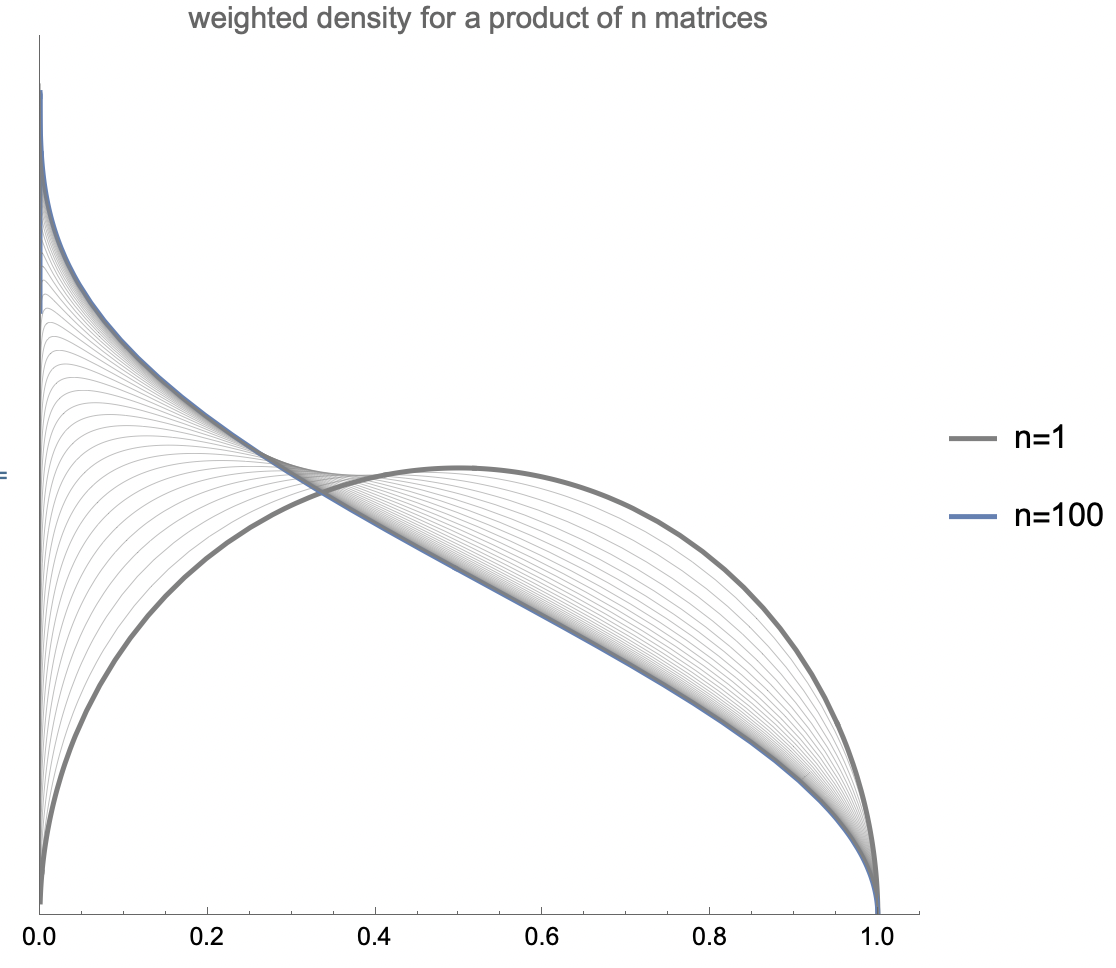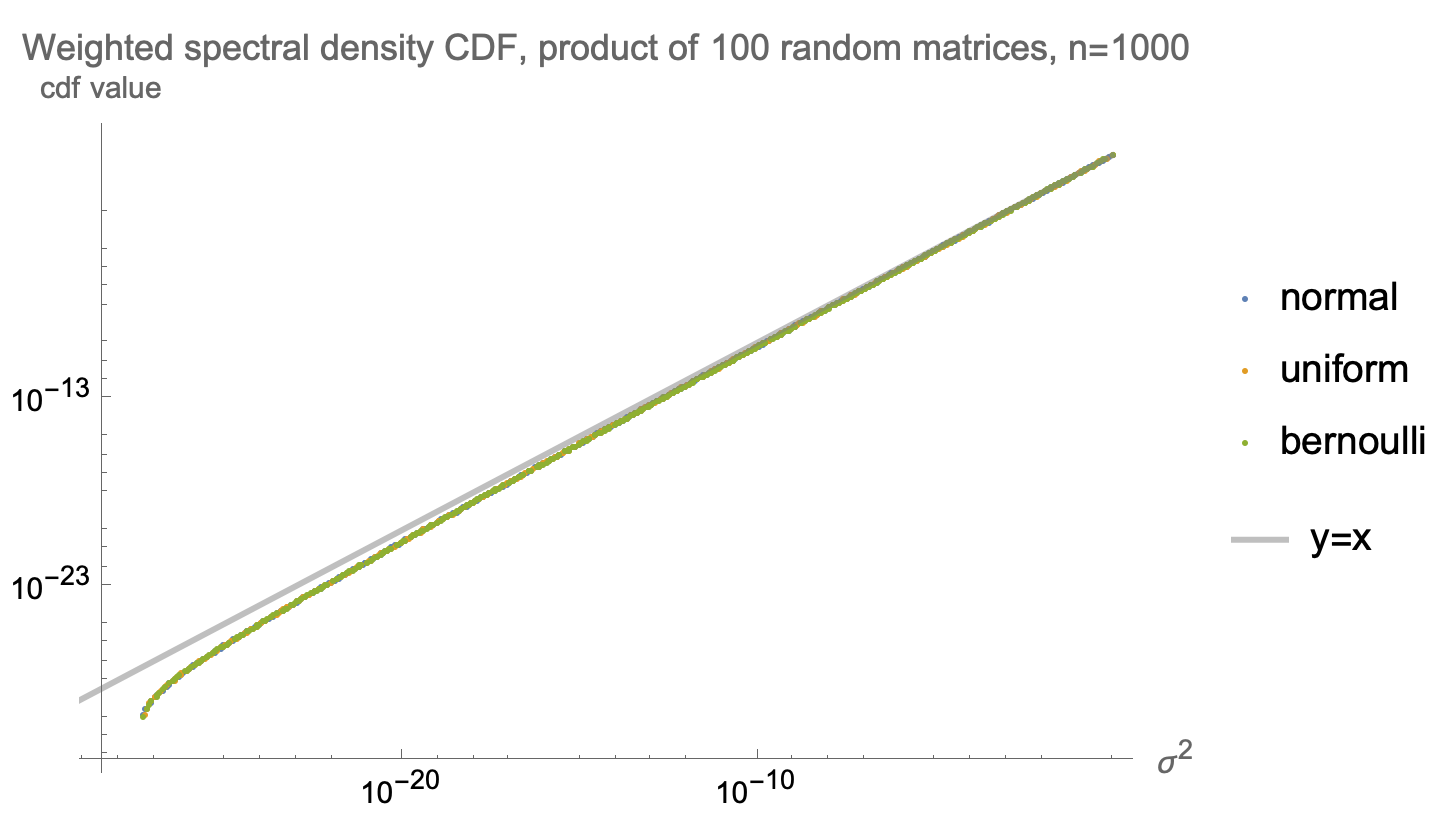Let $A$ be a product of $n$ $d\times d$ matrices with IID standard Gaussian entries and consider the value of $g(x)=x f(x)$ where $f(x)$ is the density of squared singular values of $A/\|A\|$.
Is anything known about $g(x)$ in the $n\to \infty$, $d\to \infty$ limit, where $d$ limit taken first?
The effect of taking $n\to \infty$ limit first is better understood as such product is almost surely rank-1. Plotting $g(x)$ heuristically by relying on formula 3.61 from Ipsen's thesis yields the chart below:
Empirically, I see the same density when considering matrices with Gaussian, symmetric Bernoulli and symmetric uniform entries so I'm wondering if the large $n$ limit has a name.


